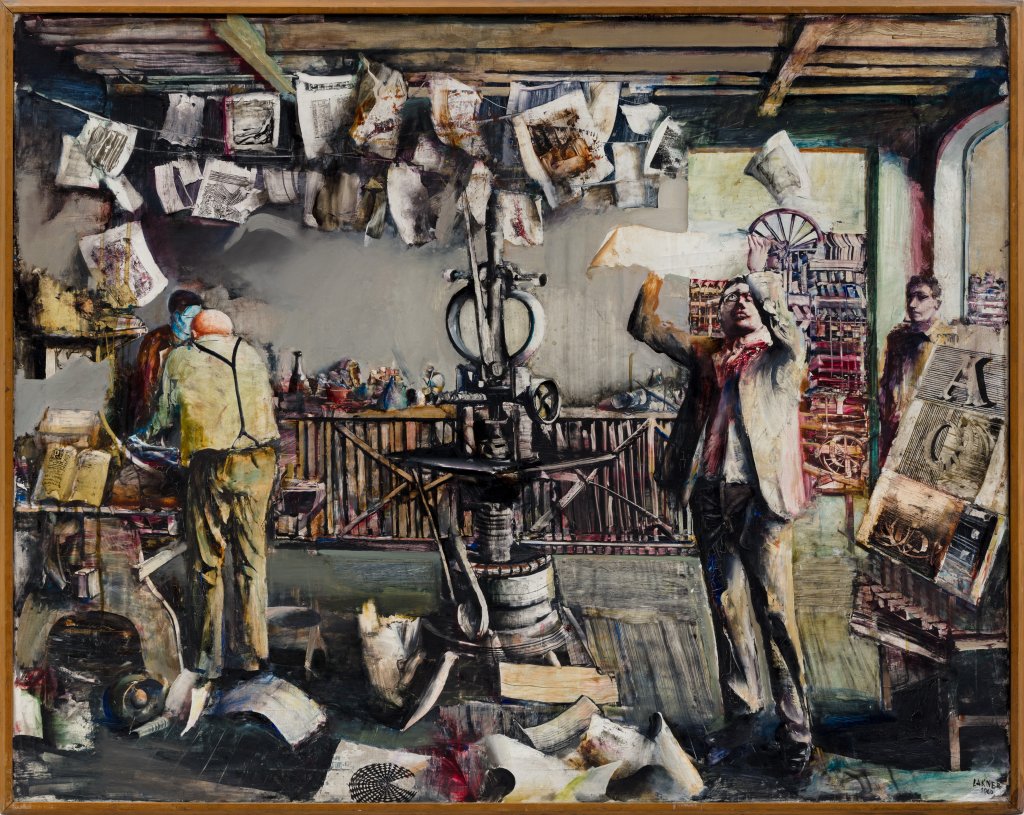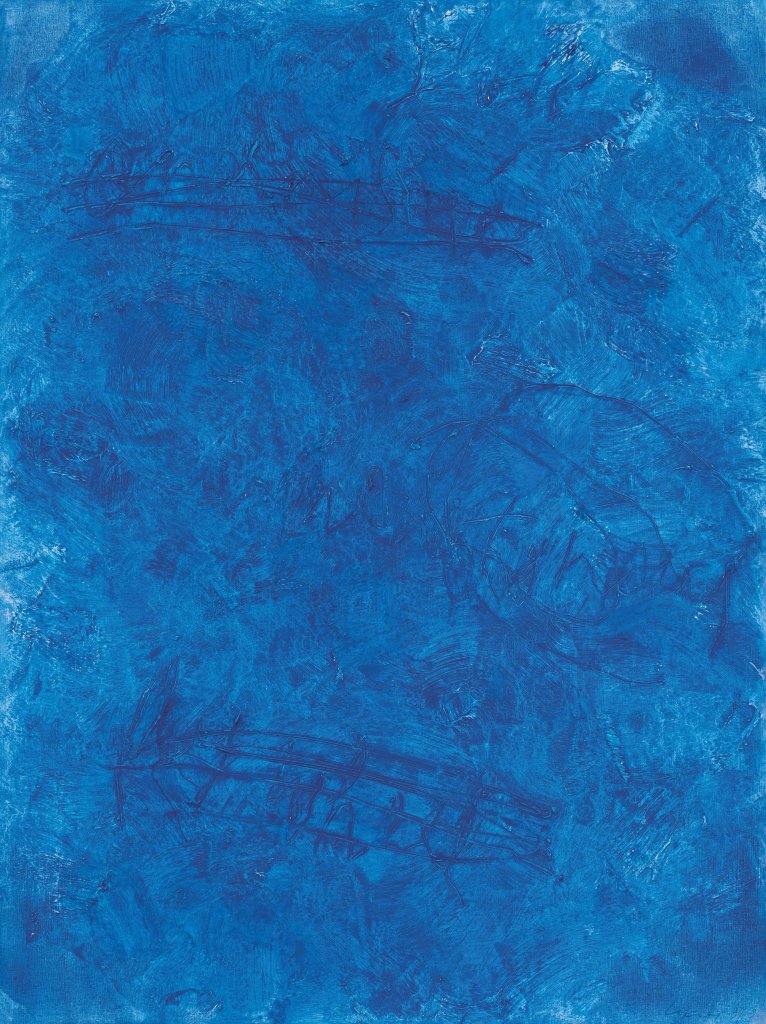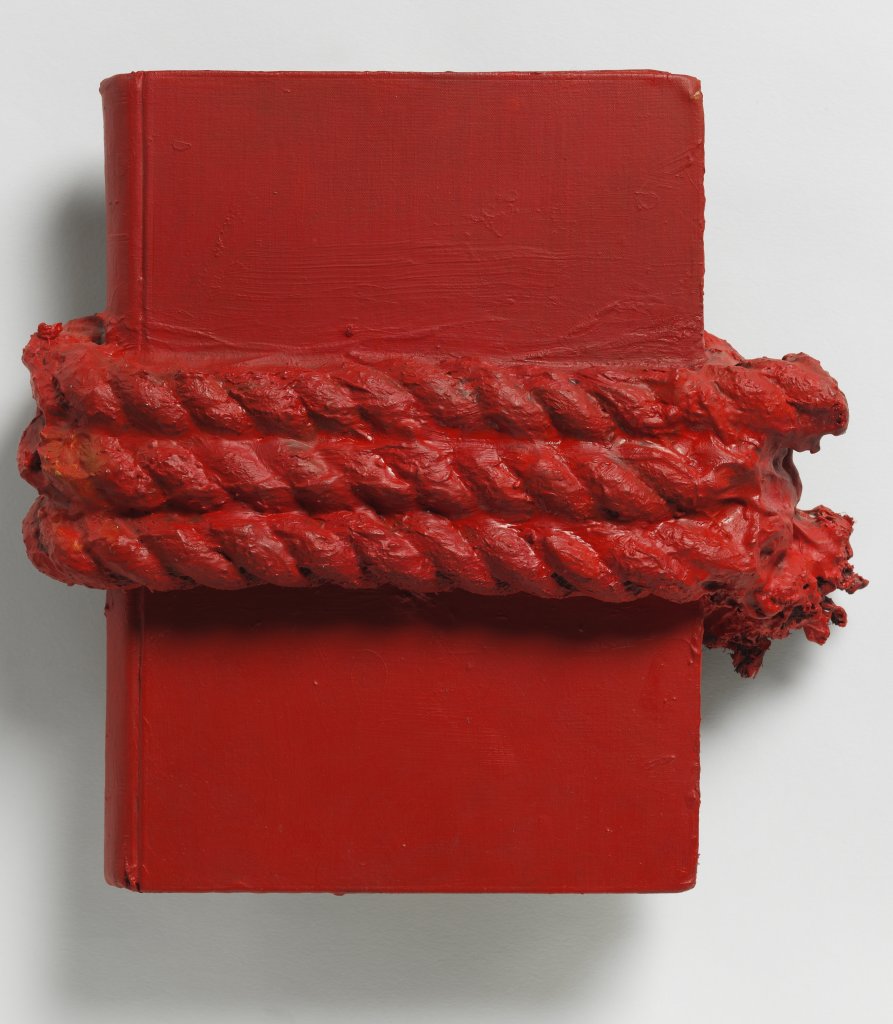Museum is presenting the fascinating paintings of László Lakner

The provocative painting Seamstresses Listening to Hitler’s Speech, painted at the beginning of his career by László Lakner (*1936), one of the most prominent figures of the Hungarian and European neo-avant-garde, seems to foreshadow the fate of the artist himself. At the height of communist totalitarianism – in the visual arts, bound by socialist realism – his production was inaccessible to the public because it encouraged critical reflection on the past. The author captured the life of people in a totalitarian society and the mechanisms of power used by dictatorships: mass psychosis, manipulation, propaganda, and the terrifying atmosphere of unclear danger. All this at a time when Hungarian society had not yet come to terms with the trauma of the Holocaust or the bloody suppression of the anti-Soviet revolution in 1956. The painting eventually ended up in a private collection in Italy, and Lakner himself emigrated to Germany in the 1970s.
The provocative painting Seamstresses Listening to Hitler’s Speech, painted at the beginning of his career by László Lakner (*1936), one of the most prominent figures of the Hungarian and European neo-avant-garde, seems to foreshadow the fate of the artist himself. At the height of communist totalitarianism – in the visual arts, bound by socialist realism – his production was inaccessible to the public because it encouraged critical reflection on the past. The author captured the life of people in a totalitarian society and the mechanisms of power used by dictatorships: mass psychosis, manipulation, propaganda, and the terrifying atmosphere of unclear danger. All this at a time when Hungarian society had not yet come to terms with the trauma of the Holocaust or the bloody suppression of the anti-Soviet revolution in 1956. The painting eventually ended up in a private collection in Italy, and Lakner himself emigrated to Germany in the 1970s.
From 29 February 2024, the Olomouc Museum of Art is presenting the eighty-eight-year-old László Lakner, whose work is characterised by thematic and stylistic diversity and constant experimentation, in the largest retrospective exhibition of this artist outside Hungary. “This exhibition is an overview, retrospective, linked to the collections of the Olomouc Museum of Art – Central European Forum. Most of the presented works are paintings, but they are naturally accompanied by other media or genres, including the classical ones, such as drawings or artist’s books, as well as new ones – the exhibition also includes a projection room, where we present the artist’s video art production,” says Barbora Kundračíková, the exhibition curator. On this occasion, the permanent exhibition Century of Relativity is being reinstalled, as it will temporarily feature not only Lakner’s works, but also works by selected Central European personalities Daniel Fischer, Danuta Urbanowicz, Daniel Pitín and Daniel Balabán.
“For a long time, we have tended to underestimate the work of authors of Central and Eastern European origin, or to neglect it altogether. But Lakner is one of the truly global players. His work ranges from early figurative painting at the turn of the 1950s and 1960s through hyperrealism and photorealism to conceptual projects, parallels can be seen in the work of Milan Knížák or Jiří Valoch. Moreover, he is an example of an artist who is able to generalise imagery and develop it within historical or literary connotations – hence the reminiscences of Duchamp, Leonardo or Paul Celan,” says Barbora Kundračíková. “The different stylistic tendencies or themes are not mutually exclusive in his work, on the contrary – they develop and enrich each other.”
“For a long time, we have tended to underestimate the work of authors of Central and Eastern European origin, or to neglect it altogether. But Lakner is one of the truly global players. His work ranges from early figurative painting at the turn of the 1950s and 1960s through hyperrealism and photorealism to conceptual projects, parallels can be seen in the work of Milan Knížák or Jiří Valoch. Moreover, he is an example of an artist who is able to generalise imagery and develop it within historical or literary connotations – hence the reminiscences of Duchamp, Leonardo or Paul Celan,” says Barbora Kundračíková. “The different stylistic tendencies or themes are not mutually exclusive in his work, on the contrary – they develop and enrich each other.”
Lakner exhibited at the Venice Biennale (1972, 1976, 1990) and the 1979 Sydney Biennale. In 1976 he received the German Critics’ Prize and in 1998 the Kossuth Prize, Hungary’s most prestigious state award for culture. His works are in the collections of major public collections including the Neue Nationalgalerie in Berlin, the Museum Ludwig in Cologne, the Hungarian National Gallery in Budapest, the Ludwig-Museum in Budapest, the Museum Boijmans Van Beuningen in Rotterdam, the Galeria degli Uffizi in Florence and the Victoria and Albert Museum in London.
The co-author of the Olomouc exhibition is Dávid Fehér, director of the Central European Research Institute for Art History (KEMKI) and curator of the Museum of Fine Arts in Budapest.
PUBLICATION
The exhibition also includes a publication linking a monographic reflection of Lakner’s life’s work with the Central European context of visual art in the second half of the 20th century, specifically the tradition of painting in this cultural and geographical area, including the German-speaking countries. The book will be published in cooperation with the Brno Gallery and the publishing house Stará pošta during the spring of this year.
The exhibition project was created based on institutional support for the long-term conceptual development of a research organisation provided by the Ministry of Culture. It is prepared in cooperation with the Museum of Fine Arts – Hungarian National Gallery in Budapest and MODEM Debrecen Gallery. The lenders include a number of public institutions and private collections.
EXHIBITION: László Lakner. Infinitum
TERM: FEB 29 – MAY 19, 2024
OPENING: FEB 29, 2024 at 6:30 PM
VENUE: Museum of Modern Art, Nave
CURATORS: Dávid Fehér, Barbora Kundračíková
ARCHITECTURAL DESIGN: Barbora Bělunková
INSTALLATION: Michal Soukup, Vlastimil Sedláček, Filip Šindelář, Daniel Opletal
RESTAURATION, CONSERVATION: Anna Píšt’ková, Toby Pospíšilů
GRAPHIC DESIGN: Petr Šmalec
EDUCATION: David Hrbek, Denisa Tessenyi











![Lászlo Lakner: The Past of Room (Flying Past of a Room) (Szoba múltja [Egy szoba múltja repül]), 1961, oil on canvas 132 × 181 cm. Museum of Fine Arts – Hungarian National Gallery, Budapest.](https://muo.cz/wp-content/uploads/2024/02/1-1024x731.jpg)